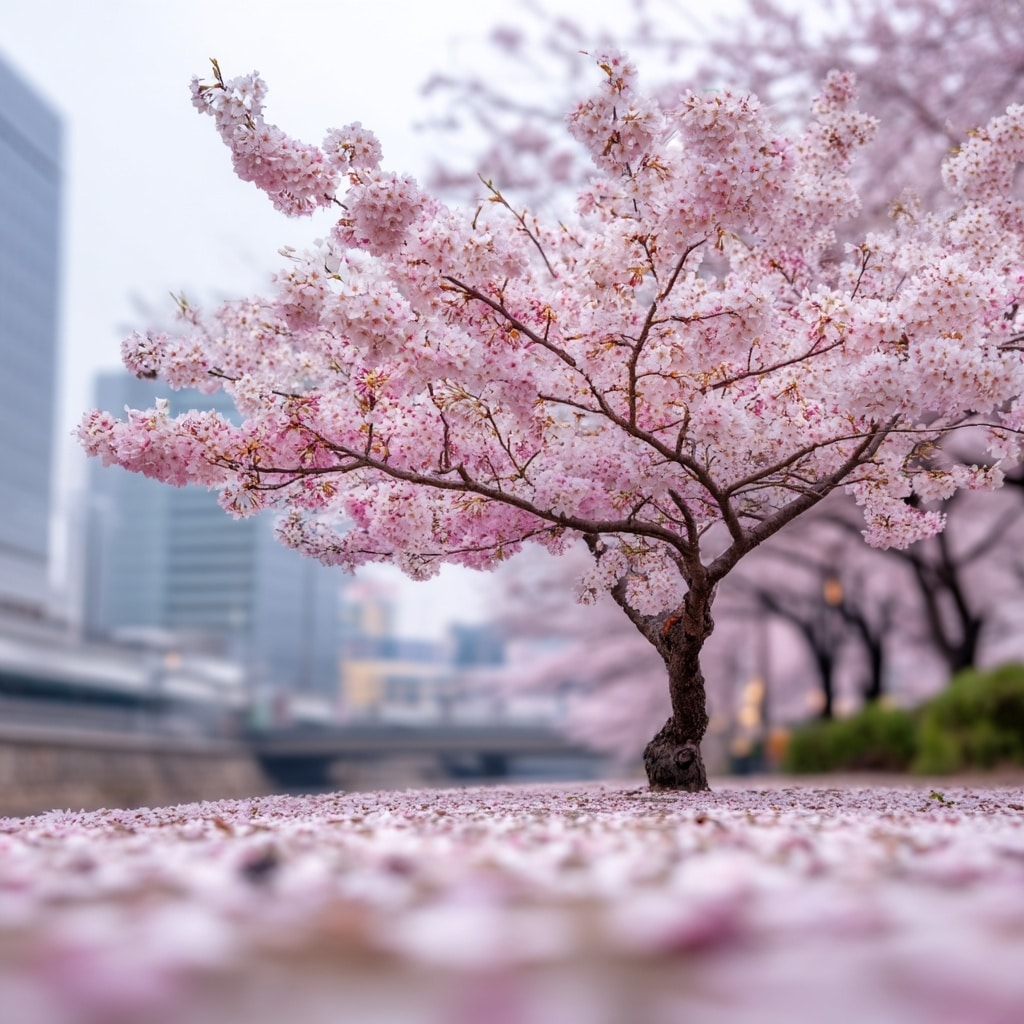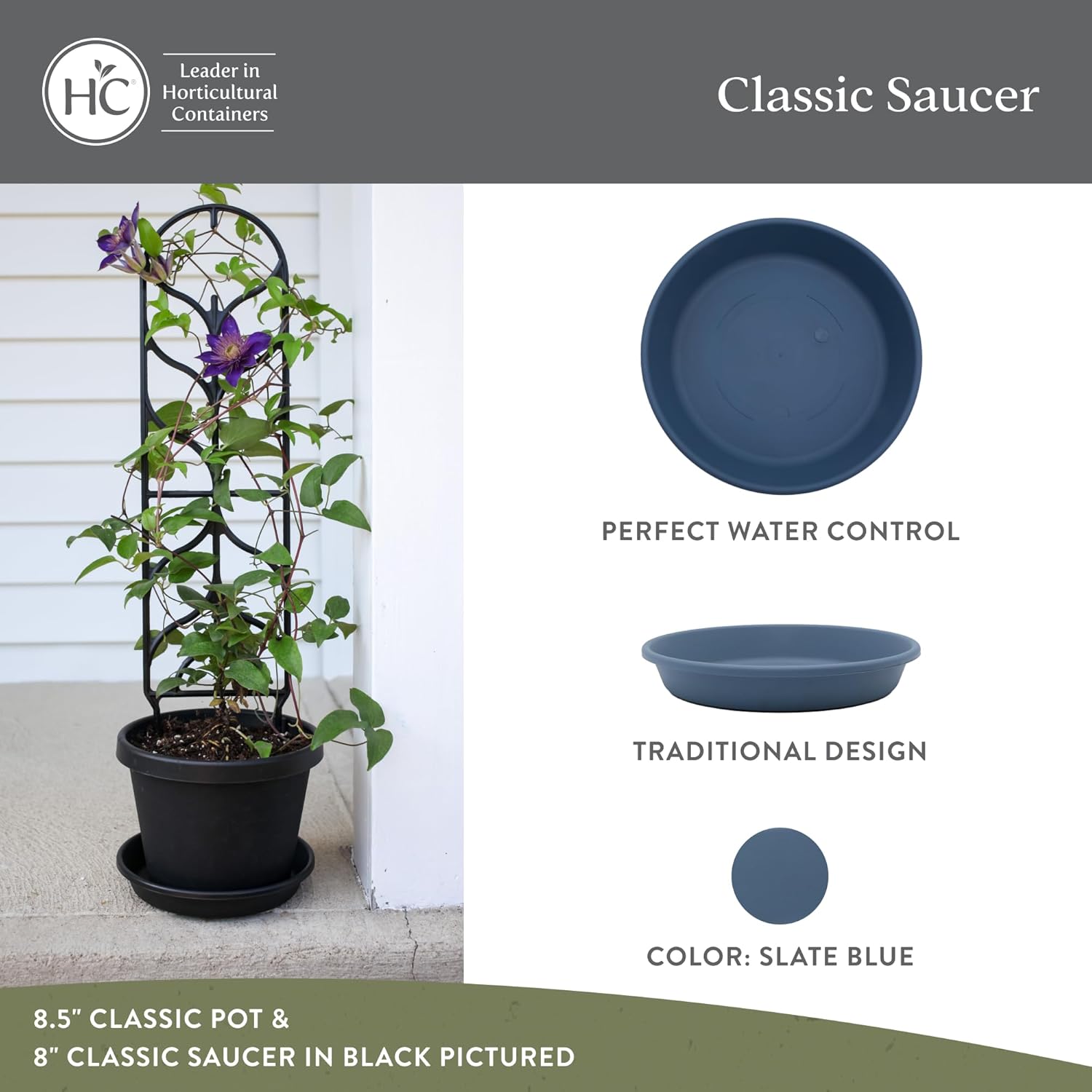Cherry blossom season in Japan is a magical time when the country’s landscapes transform into delicate tapestries of pink, white, and even yellow. These seasonal blooms, known as sakura, are more than just beautiful flowers—they’re cultural icons that symbolize renewal, beauty, and the fleeting nature of life.
While Japan is home to over 200 cherry blossom varieties, a handful stand out for their unique shapes, colors, and blooming patterns. From trees that bloom in mid-winter to those that hang like weeping willows, each variety tells a story rooted in centuries of tradition.
In this guide, we’ll introduce 10 remarkable cherry blossom varieties in Japan—each worth seeing at least once in your lifetime.
Table of Contents
1. Somei Yoshino
Among the most iconic cherry blossom varieties in Japan, the Somei Yoshino is cherished for its soft, pale pink petals that nearly appear white from a distance. These blossoms typically bloom in mid-April, blanketing parks, riversides, and city streets in a cloud-like canopy that signals the peak of sakura season.
This variety is known for its light fragrance and delicate, five-petaled flowers that bloom en masse before the leaves emerge, creating a dramatic floral display. It’s the most widely planted sakura in Japan, and also the type gifted to the United States—famously found in full bloom each spring around the Tidal Basin in Washington, D.C.
If you’re visiting Tokyo during peak bloom, Somei Yoshino will be the star of the season.
2. Shidarezakura (Weeping Cherry)
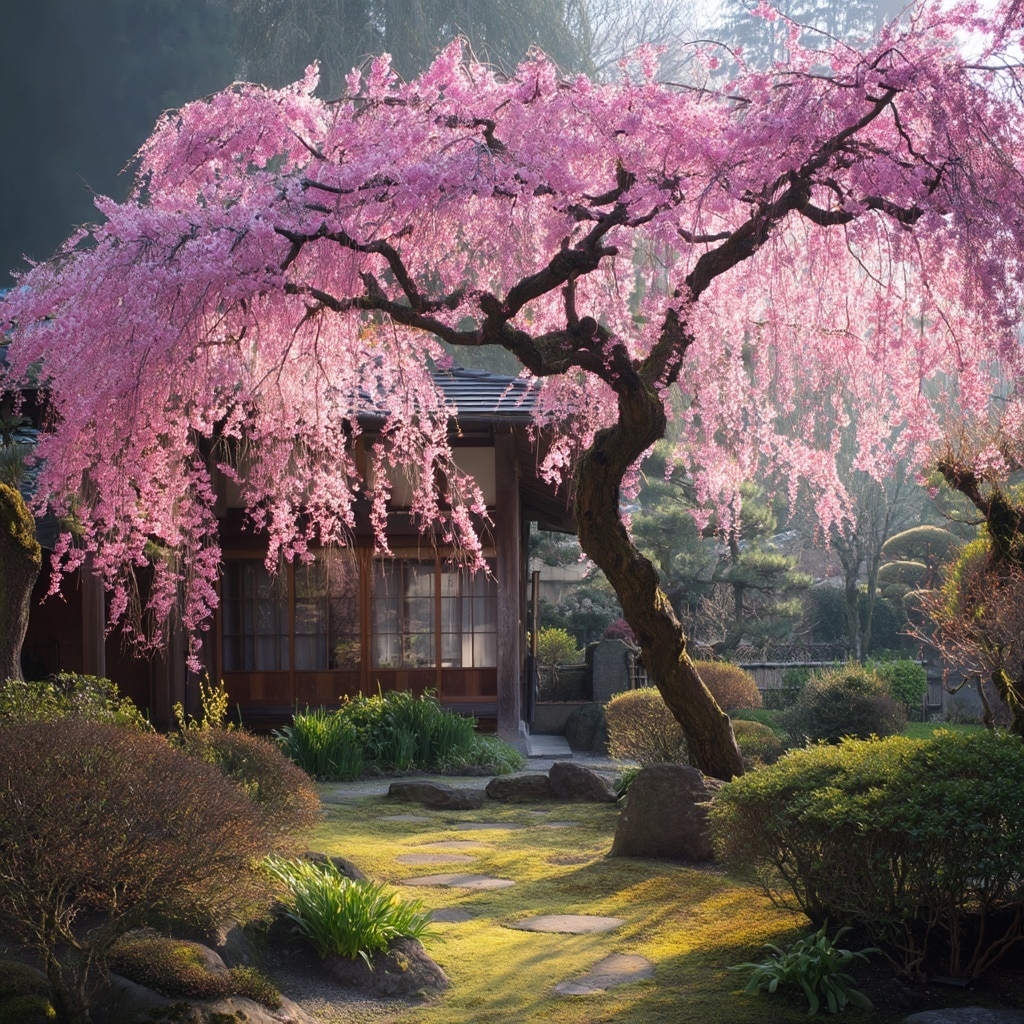
The Shidarezakura, often called the Weeping Cherry blossom, is one of the most graceful and beloved varieties in Japan. Its long, cascading branches resemble a weeping willow, draped in vibrant pink blooms that gently sway in the spring breeze.
This variety typically blooms from late March to early April and is especially popular in traditional gardens, temples, and historic towns. The flowers themselves are richly colored, often deeper pink than the Somei Yoshino, adding a romantic flair to any setting.
One of the most famous examples is the Miharu Takizakura in Fukushima—an ancient tree over 1,000 years old and designated as a National Monument. Each spring, it attracts thousands of visitors who come to witness this living symbol of renewal and resilience.
3. Kikuzakura
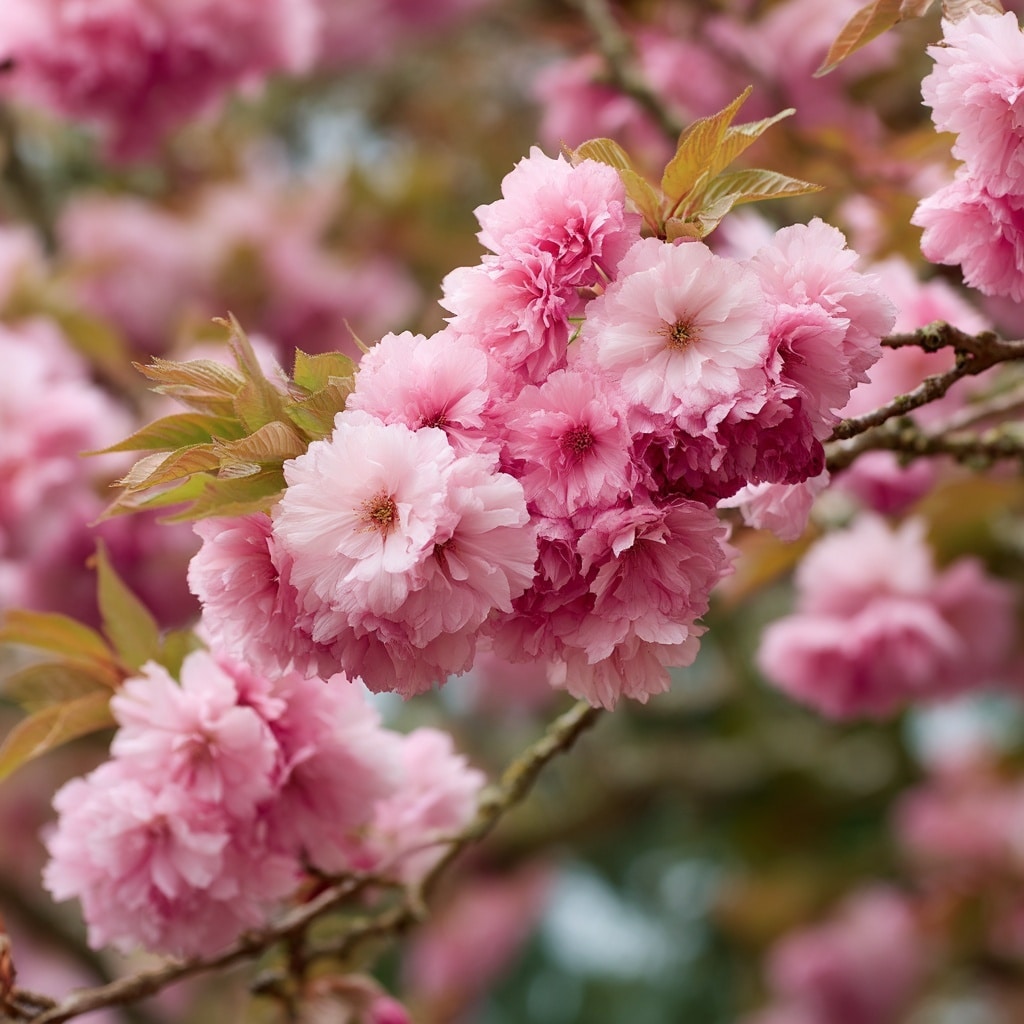
The Kikuzakura, or “chrysanthemum cherry blossom,” earns its name from its full, rounded shape that resembles Japan’s national flower, the chrysanthemum. Each stunning bloom can contain up to 100–150 delicate petals, giving it a lush, almost pom-pom-like appearance.
This variety stands out not only for its impressive petal count but also for its late blooming season. While most cherry blossom varieties reach their peak in March or April, Kikuzakura blossoms appear as late as early May—extending the hanami (flower viewing) season for those who missed the early bloomers.
The blossoms are a soft pink, gradually deepening as they mature. Often found in quieter gardens and urban parks, Kikuzakura trees offer a peaceful, almost ethereal atmosphere that’s perfect for reflective spring strolls.
4. Kawazuzakura
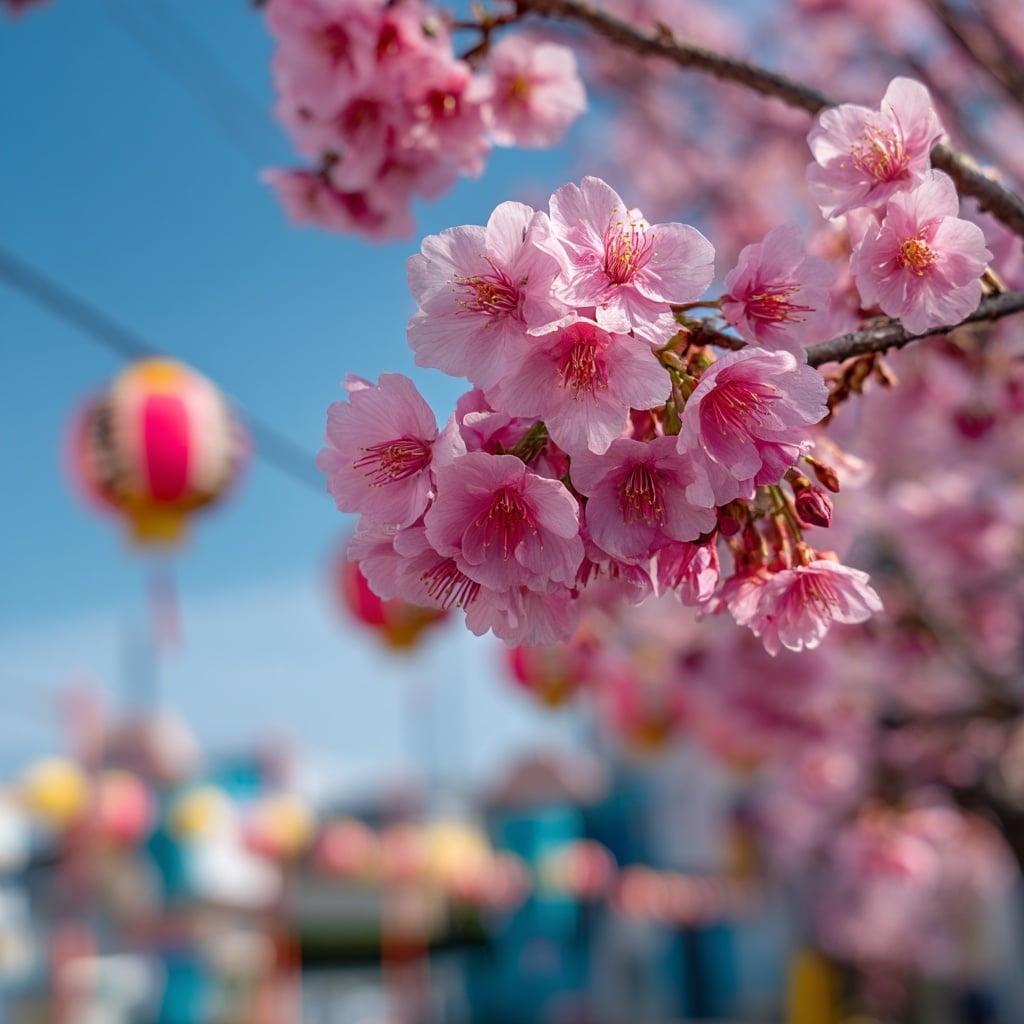
The Kawazuzakura is one of the earliest blooming cherry blossom varieties in Japan, often signaling the very first signs of spring. These blossoms typically open as early as mid-February, peaking by early March—well ahead of most other varieties.
Native to the town of Kawazu on the Izu Peninsula, this sakura has become the centerpiece of the popular Kawazu Cherry Blossom Festival, which draws nearly two million visitors each year. Unlike the fleeting blooms of Somei Yoshino, Kawazuzakura flowers linger longer, offering a vibrant display for up to two weeks or more.
The blossoms themselves are large, richly pink, and densely packed along the branches, creating a cheerful, almost tropical effect. For travelers who can’t wait for the main cherry blossom season, Kawazuzakura offers an early—and unforgettable—experience.
5. Ichiyo
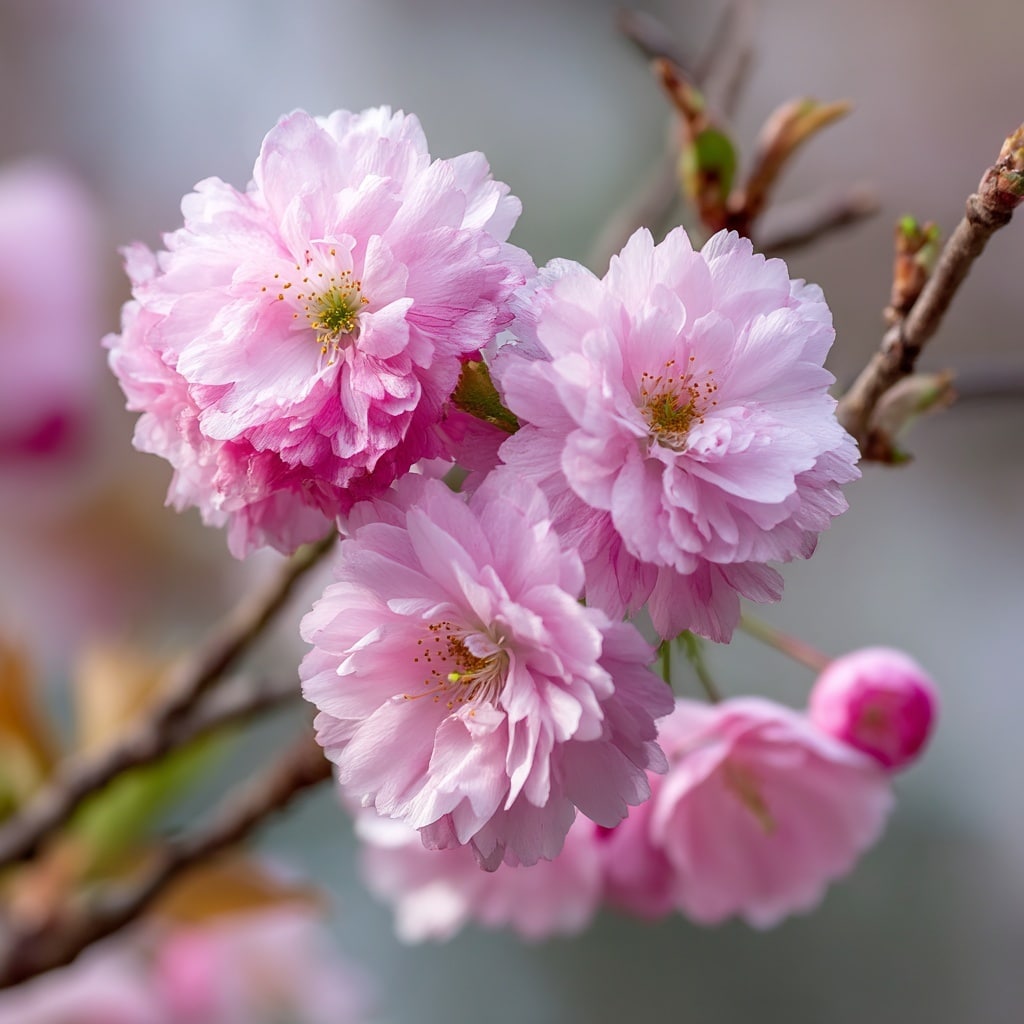
Delicate and unique, the Ichiyo is a cherry blossom variety known for its soft pink petals and its signature feature: a single green pistil in the center of each flower that resembles a tiny leaf. The name “Ichiyo” translates to “one leaf,” perfectly capturing this detail.
Each flower typically features 20 or more layered petals, forming large, full blossoms that bloom in small clusters of three or four. These elegant flowers reach their peak in mid-April and can be found in carefully curated locations like the Imperial Palace East Gardens in Tokyo, where they’re admired for their refined beauty.
Historically, Ichiyo leaves were even used to create a cherry-flavored drink, highlighting the flower’s cultural value. Today, this variety is appreciated for its gentle charm and its place among Japan’s more refined ornamental trees.
6. Kanhizakura
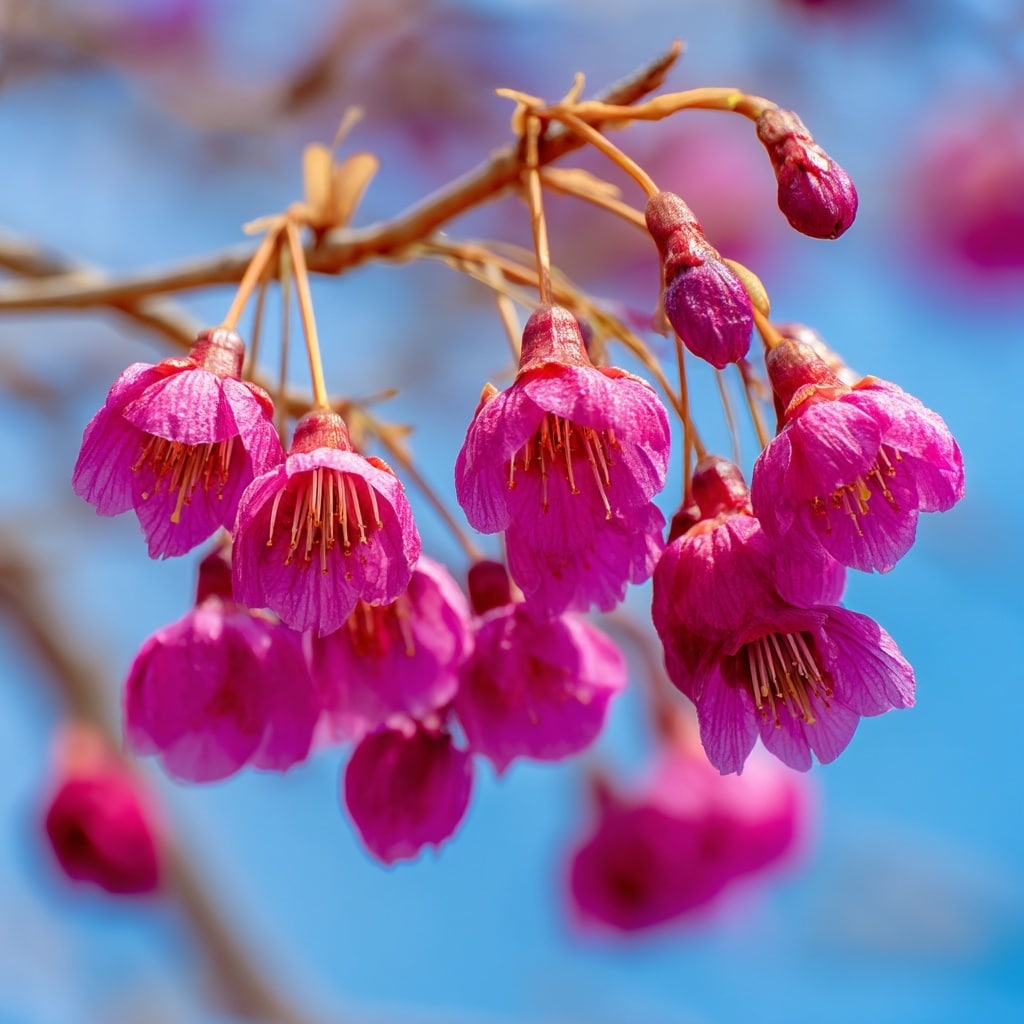
With its vivid magenta petals and bell-shaped blooms, the Kanhizakura is a bold and tropical-looking cherry blossom variety that stands out in both color and form. Unlike the soft pastel tones of most sakura, these blossoms display a deep fuchsia hue, hanging downward like tiny lanterns.
This hardy variety is native to southern Japan and is especially prominent in the Ryukyu Islands, where it blooms as early as January due to the warm climate. It’s also the official flower of Nago City in Okinawa, where the annual Nago Cherry Blossom Festival celebrates its early arrival with festive parades and nighttime illuminations.
In Tokyo and other cooler regions, Kanhizakura usually blooms in March, often overlapping with later winter flowers and setting the stage for the broader sakura season. Its long-lasting blooms can remain vibrant for several weeks, making it a reliable favorite for early hanami outings.
7. Ukonzakura

Rare and instantly recognizable, the Ukonzakura is one of the few cherry blossom varieties in Japan that doesn’t bloom in shades of pink or white. Instead, its petals open in a soft, pale yellow—sometimes tinged with green—giving it a subtle yet unforgettable appearance.
The name “Ukon” refers to turmeric, a yellow spice long used in Japanese herbal remedies, which inspired the blossom’s unique name and color association. Each flower typically has around 15 petals, forming modest, elegant blooms that peak in mid-April.
Ukonzakura is considered a prized find for blossom enthusiasts. You can spot this rare variety at places like the Koishikawa Botanical Garden in Tokyo, where its unusual hue offers a refreshing contrast among the sea of pinks that dominate the season.
8. Okame
Compact, colorful, and early-blooming, the Okame is a charming cherry blossom variety that brings bright cheer to streets and gardens before the main sakura season begins. Its small stature makes it especially popular in home gardens and urban landscapes, where space is limited but impact is still desired.
Okame trees typically bloom from late February to early March, producing dainty flowers in varying shades of pink—from pale blush to rich rose—with petals that often open before the leaves appear. The blooms cluster tightly along bare branches, creating a vibrant visual contrast.
Interestingly, this variety isn’t native to Japan. It was developed by a British botanist who crossbred wild cherry species to create a tree that could withstand harsher climates while maintaining ornamental beauty. Despite its hybrid origins, the Okame has been lovingly embraced throughout Japan for its resilience and joyful appearance.
9. Fugenzou

The Fugenzou is a richly layered cherry blossom variety with a fascinating name and historical roots. Each blossom contains between 25 and 50 petals, forming large, rounded flowers in soft pink shades that feel both luxurious and serene.
Its name is deeply symbolic—“Fugen” refers to the bodhisattva Samantabhadra, a revered figure in Mahayana Buddhism, while “zou” means elephant. Together, the name alludes to the flower’s petal shapes, said to resemble the ears of the white elephant that often accompanies Fugen in Buddhist art.
This variety has been cultivated in Japan since at least the 15th century and remains a favorite in temple gardens and historic sites. The blooms appear in mid to late April and often linger longer than many other types, making Fugenzou a standout both in appearance and cultural meaning.
10. Edohigan

The Edohigan is one of the oldest and most resilient cherry blossom varieties in Japan, known for its graceful form and symbolic beauty. Its name is derived from “Higan,” the Japanese spring equinox, marking its early bloom time in mid-March to early April.
What makes Edohigan especially remarkable is its life span—these trees are known to live for centuries. In fact, Japan’s oldest known cherry tree, the 2,000-year-old Jindai Zakura in Yamanashi, is an Edohigan. Its blossoms open in vibrant pink, then gradually fade to white before falling, a transition that beautifully echoes the fleeting nature of life.
Favored for its strength against wind and snow, Edohigan is often planted in mountainous or rural regions. Its early arrival each year quietly ushers in spring while reminding viewers of nature’s gentle impermanence.
Conclusion
From the elegant cascade of the Shidarezakura to the vibrant early blooms of Kawazuzakura, each cherry blossom variety in Japan offers a distinct experience shaped by history, region, and bloom time. Whether you’re chasing the earliest petals in Okinawa or savoring late-season Kikuzakura in Tokyo, there’s a tree for every stage of spring—and every kind of blossom lover.
These stunning trees not only beautify the landscape but also embody Japan’s cultural reverence for fleeting beauty and seasonal change. So, the next time you plan a hanami picnic, remember: there’s more to the season than just pink petals. Each variety tells its own story—delicate, brief, and unforgettable.



